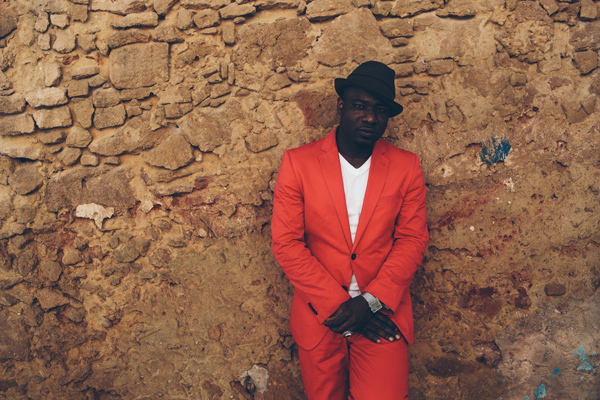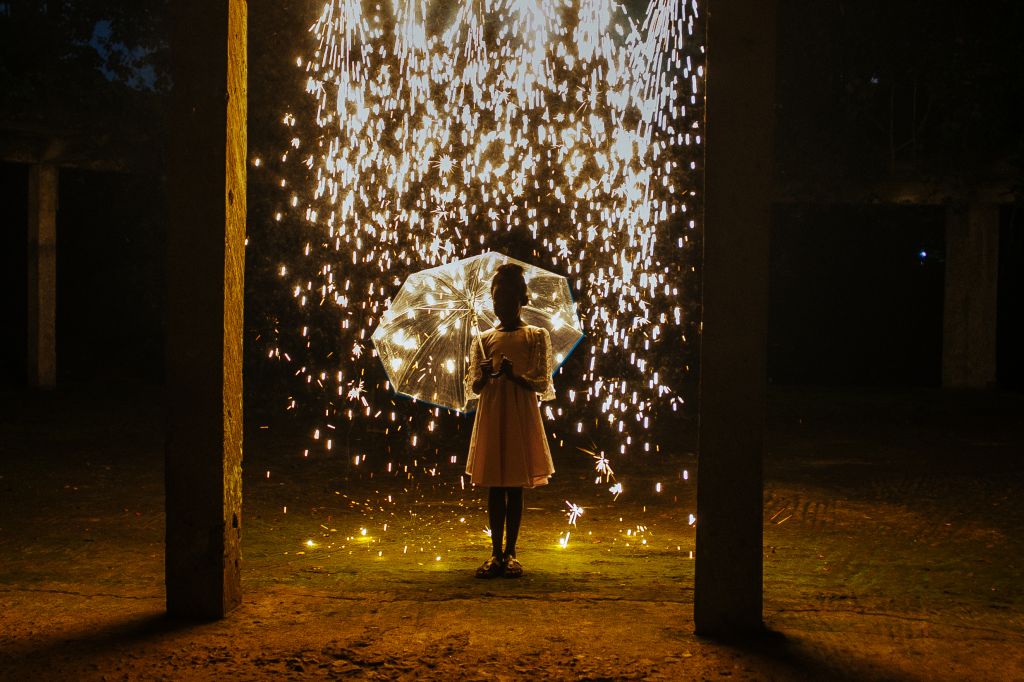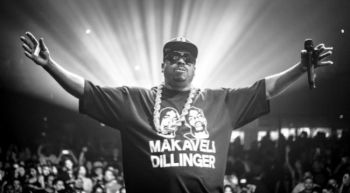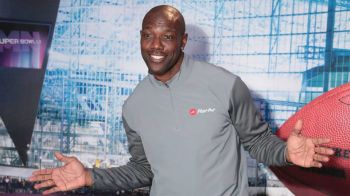
Source: Client Provided / client provided
Worlds collide when Blitz Bazawule is behind the lens. The rapper, who also goes by Blitz The Ambassador has gone for years under the radar as both a musician and filmmaker, creating works that align both with his vision and his personal history.
The Burial of Kojo is as personal a project as it may get for the 37-year-old filmmaker, a story so personal it drew Ava DuVernay and her Array production company to not only pick up the film but also launch it on Netflix to widespread critical acclaim. It even screened at the Houston Museum of African American Culture last Thursday to even more local acclaim in Houston.
We chatted with Blitz about his new film, the connection with DuVernay and how his first roommate when he got to New York has a connection to HBO and LeBron James.
First off, congratulations on the film. Was it surreal to open up Netflix and see The Burial of Kojo on the first page?
Blitz The Ambassador: Being that it’s Netflix … I’ve had an account since it went digital. It’s a dream and it’s a platform that opens your work to the world. And my son, he’s my right hand. He was the first to turn it on and say, ‘Hey, you’re on Netflix!’ So to find the film there … I think I became a legitimate filmmaker, in his eyes at least.
In this day and age, if it’s not on YouTube or Netflix or any streaming platform, it doesn’t feel real to a younger generation.
Absolutely not and with Netflix, there’s an advantage … it’s kind of a legitimizer. It still has the kind of … there are still some barriers. YouTube? Anybody can upload. The younger generation, I think they get desensitized to that. But with Netflix, it feels legitimate. I couldn’t just upload what I want to Netflix. It must mean that someone deems it worthy to be on the platform.
What made you make this film? There’s not a lot of representation in regards to Black female leads in film, especially in international filmmaking. Whenever you make movies like these, they get catch-alls.
For me, it’s about representation. It’s absurd that we can have such a populous continent. We’re probably 1.2 billion people on the continent with probably another hundred million in the diaspora. To have this little representation in an art form that is so huge in how it builds empty for people … I’ve always found it odd and absurd that you can be on a plane and swipe through like, 50 movies and only find two or three features black people and brown people. And even when you find those films, the question is, ‘What is the subject matter? Does it flatter them or is it unflattering?’ That was problematic for me.
As somebody from the continent of Africa, raising a son in the United States … it’s important that they see themselves. That the world gets to see each other. The level of empathy I felt for Caucasians or Asians based on the work I’ve absorbed is the same kind of empathy that the rest of the world must build for me and the only way that is possible is through story. That’s the only way we get to know each other. Making this film for me was a huge step, a bold step because I knew there would be a lot of push back, because the subject matter wasn’t the same slope that most people know about Africa: war, disease, famine, which has become a very unfair characterization for a very diverse continent with so much beauty and brilliance. So this was a huge opportunity for me to flip the script.
Speaking of representation … do you follow wrestling by any chance?
No, I don’t.
Alright, so wrestling, much like Hollywood – it has its own particular politics when it comes to race, right?
Right.
So, there was this event called WrestleMania and a man of Ghanaian descent became the second black person ever to be WWE Champion.
Wow!
The representation in that? You could see the excitement in the eyes of all different races of wrestling fans but especially black wrestling fans. So, that’s an interesting parallel to think of, especially in regards to representation when people see themselves in moments of art.
It was necessary. How representation works is, once you see yourself within a specific medium or space, it demystifies it in terms of what you can do. It doesn’t mean that I’m going to become a wrestler or you’re going to become a filmmaker. All that means is there’s something I’m not barred from. It means no ground of people should be predisposed to some kind of extension. To say, “No you cannot participate in this.” To me, that’s unfair because the world cannot yet calculate how much it loses on a daily, hourly, minute basis by exclusion of black and brown voices. On all levels whether it be tech, creative arts to education and everything else.
Everyone’s got something to contribute and this is something we’re still discussing in 2019. The Burial Of Kojois the first Ghanaian film of its caliber that is exclusively produced by, directed by, written by Ghanaians that is on Netflix. It lets you know that we’re still in the age of firsts. Which is quite insane in my opinion. The world should have advanced so much that certain things shouldn’t be questioned. Things like this motivates others to say, “We can contribute and we can share each others stories and build empathy for each other.”

Source: Client Provided / client provided
Did you find your worlds somewhat colliding since you’re a musician? That storytelling as a musician moves a certain kind of way versus traditional filmmaking?
Yeah, those mediums are linked! I started as a visual artist and then meandered my way into music and then kind of now combine the visual and sonic art. I personally have never separated them. I write films very musically, I write music very visually. So, their ideas are the same to an extent. What’s interesting to me is one unique thing we’ve been able to bring is sample culture. Particularly in hip-hop. It opens you up to improvisation, which isn’t anything new to black and brown culture. If you look at the music from the global South, a lot of it is improvisational. Think about jazz, think about funk, think about Afrobeats. These are all sounds that are uncharted, not symphonic, everyone catches a vibe!
Miles Davis catches a vibe, Coltrane catches a vibe and that’s kind of been the nature of creativity over time. My thing is, why would that differ with cinema? It’s the same idea that we’ve created most of our things so; our contribution to the canon of cinema is huge right now. We’ve approached the medium with the same freedom a jazz musician would. I’m not saying we’re the first to do it; we’ve gotten a lot of phenomenal support. The reviews from The New York Times, Washington Postall saying the same thing … which means we cracked the code! I’m hoping that a lot of people follow suit.
Blitz The Ambassador On ‘The Burial Of Kojo’: “It’s About Representation” [EXCLUSIVE] was originally published on theboxhouston.com















